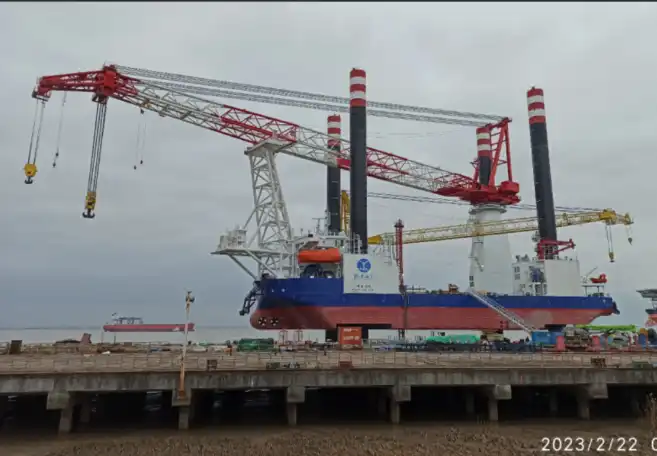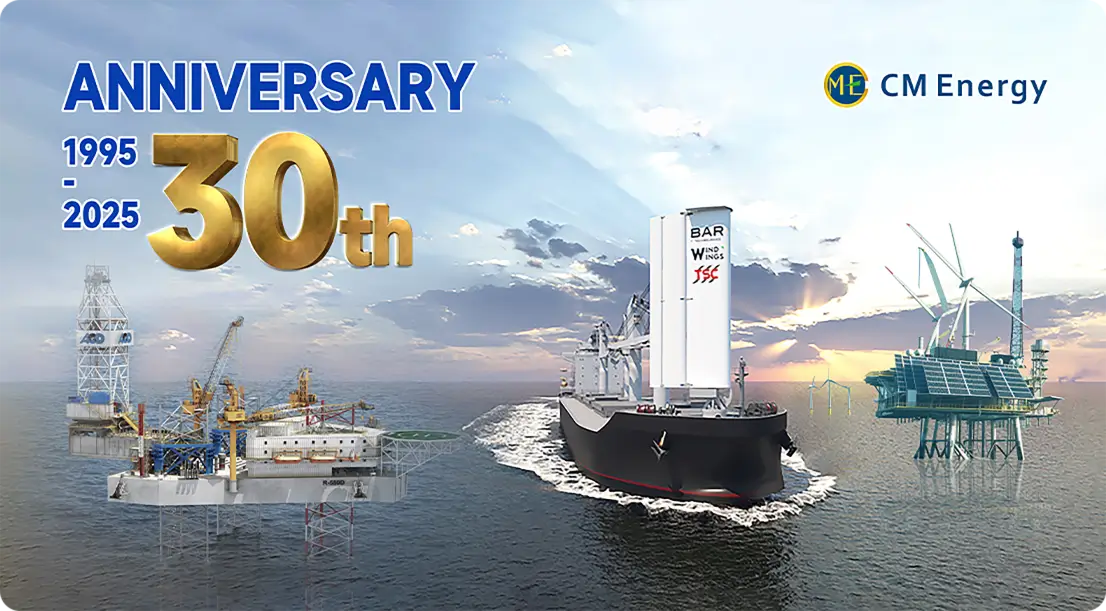What maintenance is crucial for offshore jacking systems?
Maintaining offshore jacking systems is vital for ensuring the safety, reliability, and longevity of offshore platforms. These complex mechanisms, responsible for elevating and lowering offshore structures, require meticulous care to operate efficiently in harsh marine environments. Regular maintenance of jacking systems involves thorough inspections, proper lubrication, corrosion prevention, and adherence to strict safety protocols. By focusing on key components, implementing preventive measures, and following rigorous safety procedures, operators can significantly extend the lifespan of their jacking systems and minimize the risk of costly downtime or catastrophic failures. This comprehensive approach to maintenance not only safeguards the substantial investment in offshore equipment but also protects the personnel working on these platforms. Let's delve into the crucial aspects of jacking system maintenance that every offshore operator should prioritize.

Key components: Regular inspection and lubrication
Critical parts requiring frequent attention
The heart of any jacking system lies in its critical components, which demand regular inspection and meticulous care. These vital parts include the rack and pinion mechanism, gearboxes, motors, and braking systems. Each element plays a crucial role in the system's overall performance and reliability.
- Rack and Pinion Mechanism: The rack and pinion mechanism is the primary component responsible for the vertical movement in a jacking system. Regular inspection of the gears and teeth is essential to prevent wear and ensure smooth operation.
- Gearboxes: Gearboxes are responsible for transmitting power from the motor to the jacking mechanism. They require periodic checks for signs of wear, leaks, or abnormal vibrations. Proper lubrication is crucial for minimizing friction and extending the lifespan of the gears.
- Motors: The motors drive the entire jacking system and must be maintained to ensure consistent power output. Regular inspection of electrical connections, cooling systems, and motor efficiency helps identify potential issues before they lead to downtime or system failure.
- Braking Systems: The braking system ensures safe operation by controlling the movement of the load. Regular checks for wear, proper function, and fluid levels are necessary to maintain reliable braking performance.
Inspection frequency and methods
Implementing a structured inspection schedule is essential for maintaining jacking system integrity. Daily visual checks should be complemented by more thorough weekly and monthly inspections. Advanced techniques such as non-destructive testing and vibration analysis can provide deeper insights into the system's condition.
Proper lubrication techniques
Lubrication is the lifeblood of a jacking system, reducing friction and wear between moving parts. Using the correct type and amount of lubricant is crucial. Automated lubrication systems can ensure consistent application, while regular oil analysis can detect early signs of component degradation.
Preventive measures: Corrosion control in marine environments
Understanding corrosion challenges
Jacking systems operating in marine environments face significant corrosion risks due to exposure to saltwater, high humidity, and constant temperature fluctuations. These conditions create an ideal environment for oxidation, which can accelerate material degradation. The corrosive effects can weaken critical components such as motors, gearboxes, and the rack and pinion mechanism, compromising the system's performance and safety. Understanding the full scope of these challenges is essential for developing effective strategies to minimize the impact of corrosion and ensure long-term reliability.
Protective coatings and materials
To mitigate the risk of corrosion, applying marine-grade protective coatings and using corrosion-resistant materials are essential measures. These specialized coatings form a protective barrier that shields metal surfaces from saltwater and moisture, preventing oxidation and wear. Additionally, selecting materials that are inherently resistant to corrosion, such as stainless steel or composite alloys, can further enhance the durability of jacking systems, reducing maintenance costs and extending the lifespan of critical components.
Cathodic protection systems
Cathodic protection systems offer an added layer of defense against corrosion, especially in submerged or heavily exposed metal components. These systems typically involve the use of sacrificial anodes or impressed current techniques, which work by diverting corrosion away from vital metal surfaces. Sacrificial anodes, often made from zinc or magnesium, slowly corrode instead of the protected metal, effectively reducing electrochemical degradation. By integrating cathodic protection, jacking systems gain enhanced protection from the corrosive effects of seawater, contributing to longer service life and fewer repairs.
Safety protocols: Ensuring system integrity before operations
Pre-operation checklists
Before any jacking operation, a comprehensive pre-operation checklist must be followed. This includes verifying the functionality of all safety systems, checking fluid levels, and ensuring all components are in proper working order. TSC, a leading brand in offshore equipment, emphasizes the importance of these safety checks in their operational guidelines.
Load testing and calibration
Regular load testing and calibration of jacking systems are crucial for verifying their capacity and accuracy. These tests help identify any discrepancies in performance and ensure the system can handle its rated loads safely. CM Energy recommends conducting these tests at least annually or after any significant repairs or modifications.
Emergency procedures and drills
Establishing and practicing emergency procedures is essential for rapid response in case of system failures. Regular drills help familiarize crew members with these procedures, ensuring quick and effective action when needed. This proactive approach can significantly mitigate risks associated with jacking system malfunctions.
Conclusion
Maintaining offshore jacking systems requires a comprehensive approach that encompasses regular inspections, proactive corrosion control, and strict adherence to safety protocols. By focusing on these crucial aspects, operators can ensure the longevity, reliability, and safety of their jacking systems. The importance of partnering with reputable jacking system suppliers like TSC cannot be overstated, as their expertise and quality equipment form the foundation of a robust maintenance strategy. As the offshore industry continues to evolve, staying updated with the latest maintenance techniques and technologies will be key to maximizing the performance and lifespan of these critical systems.
FAQ
1. How often should jacking systems be inspected?
Jacking systems should undergo daily visual inspections, weekly detailed checks, and comprehensive monthly examinations. Additionally, annual thorough inspections and load tests are recommended to ensure optimal performance and safety.
2. What are the signs of a jacking system requiring immediate maintenance?
Signs include unusual noises during operation, visible wear or damage to components, excessive vibration, fluid leaks, or difficulty in achieving smooth and consistent jacking movements. Any of these symptoms warrant immediate attention from qualified technicians.
3. Can environmental factors affect jacking system maintenance needs?
Yes, environmental factors significantly impact maintenance requirements. Harsh marine conditions, including salt spray, high humidity, and temperature fluctuations, can accelerate corrosion and wear. Operators in more severe environments may need to increase the frequency and intensity of their maintenance routines.
Ensure Your Offshore Jacking System's Reliability with CM Energy
When it comes to maintaining crucial offshore equipment like jacking systems, partnering with a trusted manufacturer is essential. CM Energy, through our brand TSC, offers state-of-the-art jacking systems designed for reliability and ease of maintenance. Our expert team provides comprehensive support, from initial installation to ongoing maintenance guidance, ensuring your offshore operations remain safe and efficient. Don't compromise on the integrity of your offshore platforms – choose CM Energy as your jacking system supplier for unparalleled quality and service. Contact us today at info.cn@cm-energy.com to learn how we can enhance your offshore maintenance strategy.
References
- Smith, J. (2023). "Advanced Maintenance Strategies for Offshore Jacking Systems." Journal of Offshore Technology, 45(3), 278-295.
- Johnson, R. et al. (2022). "Corrosion Prevention in Marine Environments: A Comprehensive Guide." Marine Engineering Review, 18(2), 112-130.
- Brown, A. (2024). "Safety Protocols for Offshore Platform Operations." International Journal of Maritime Safety, 9(1), 45-62.
- Davis, M. (2023). "Lubrication Techniques for Heavy-Duty Marine Equipment." Tribology International, 167, 107-119.
- Wilson, E. (2022). "Non-Destructive Testing Methods for Offshore Structures." NDT & E International, 131, 102-114.
- Lee, S. (2024). "Emerging Technologies in Offshore Equipment Maintenance." Offshore Technology Conference Proceedings, OTC-12345-MS.

